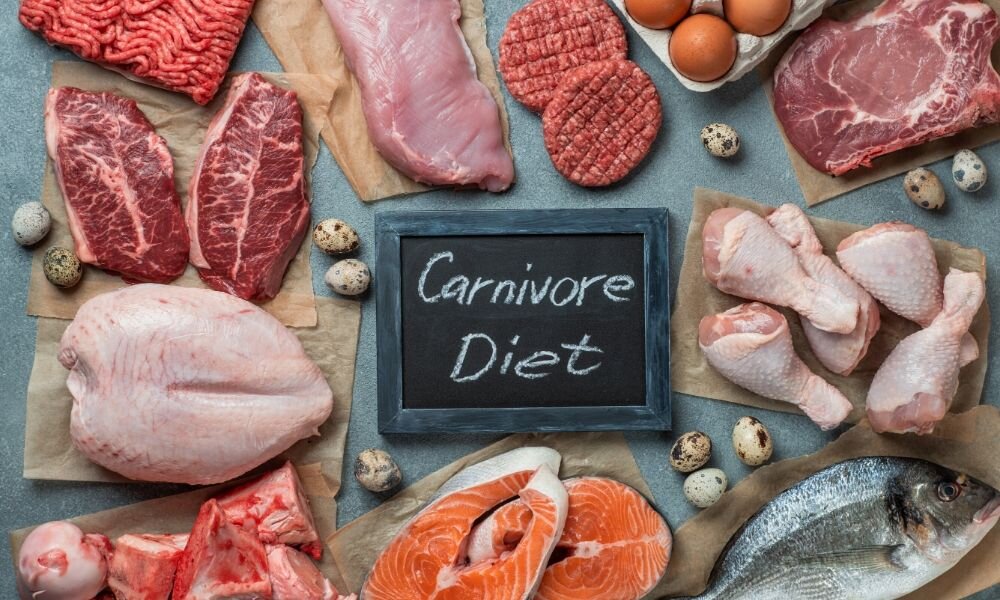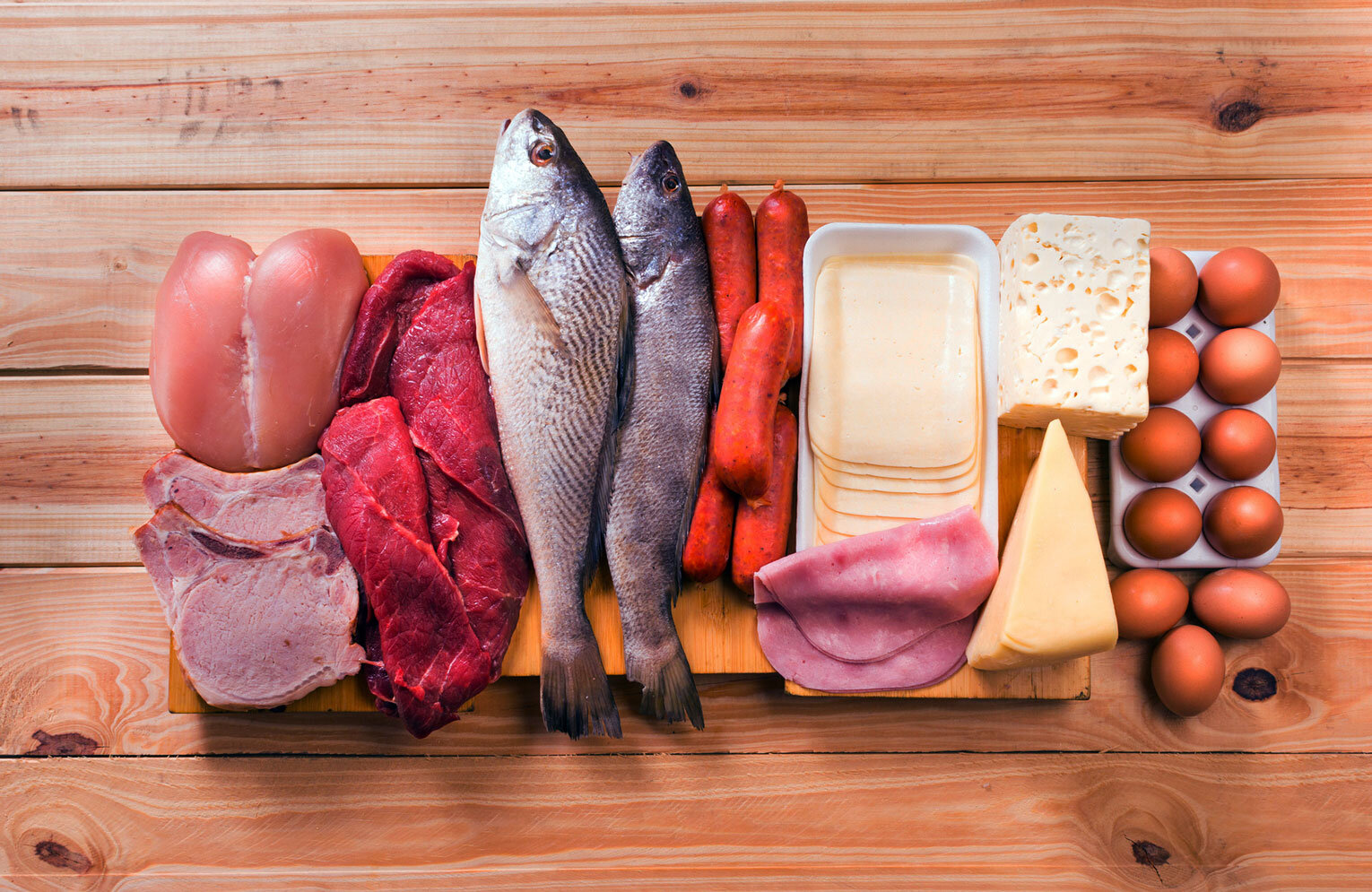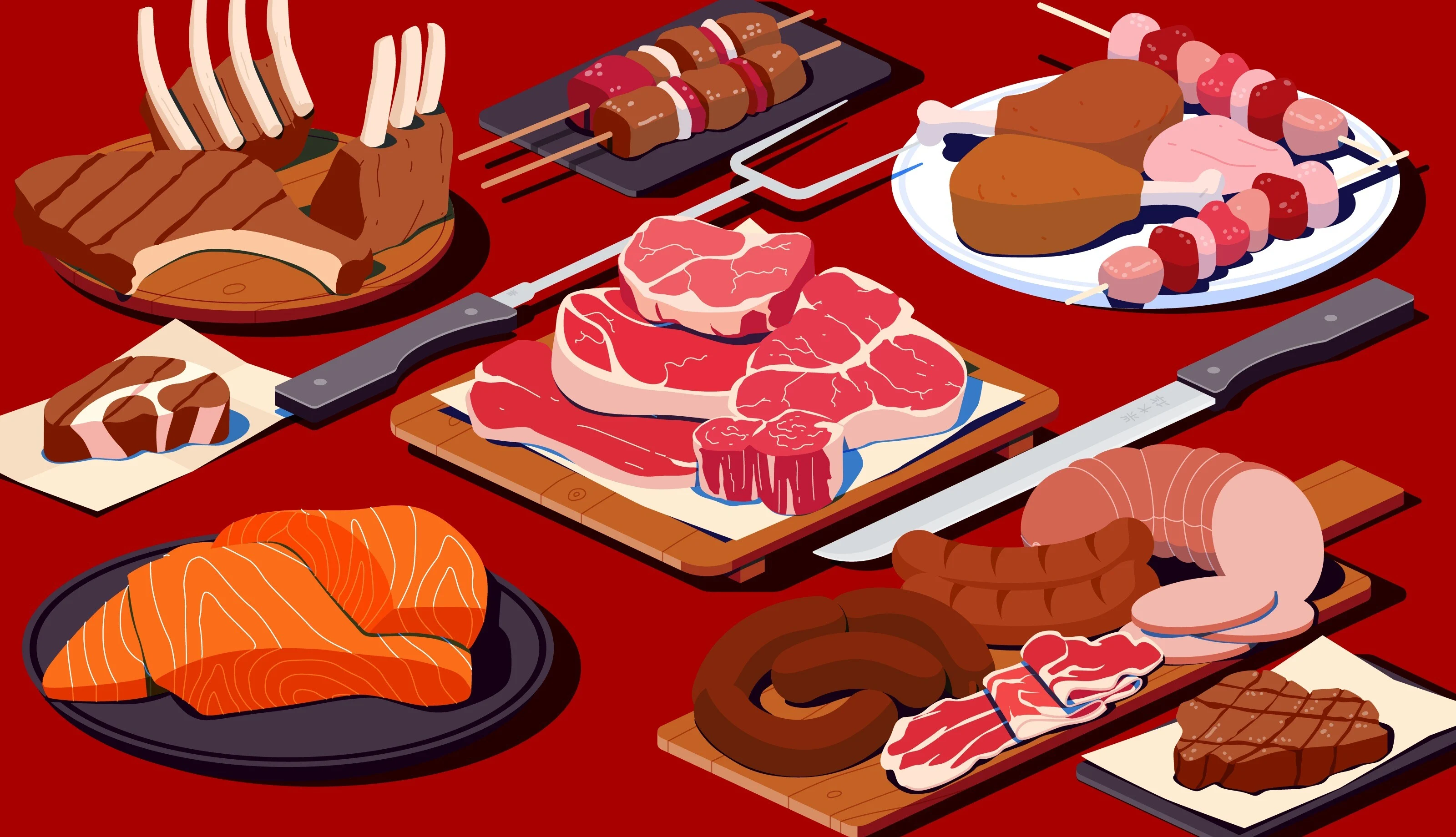Leaderboard
-
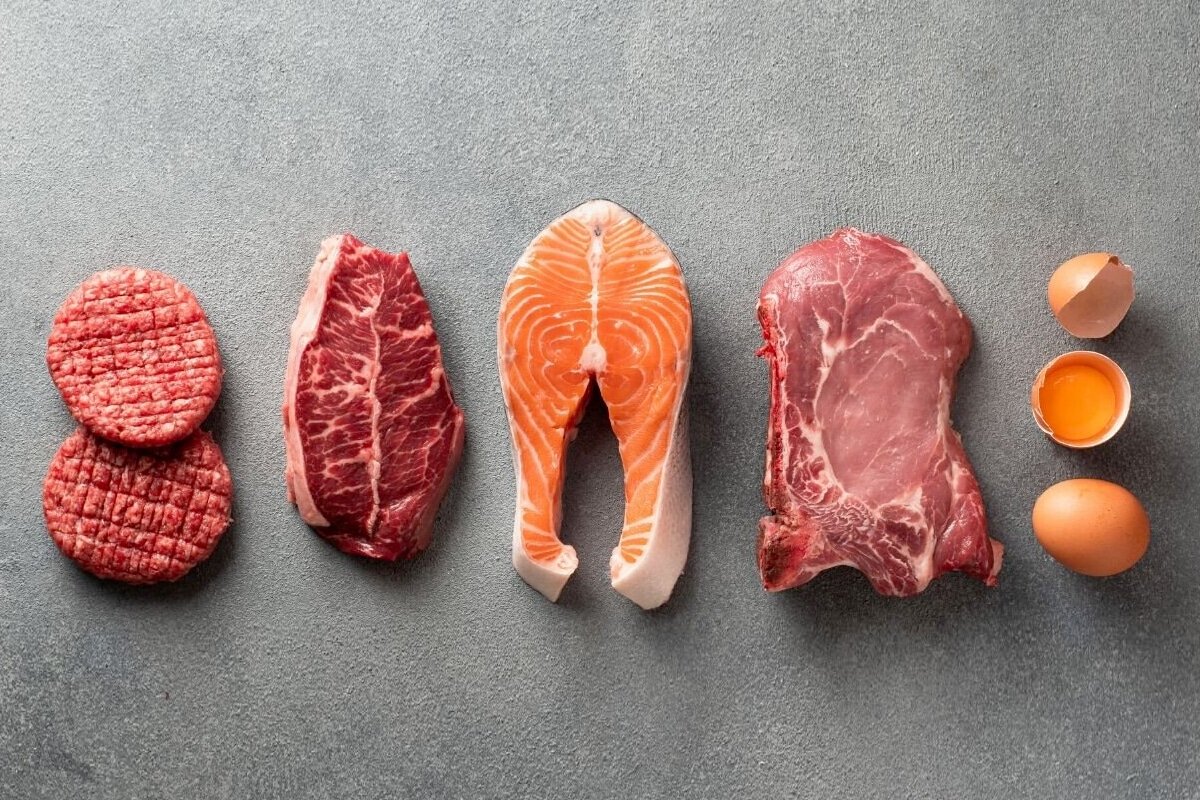
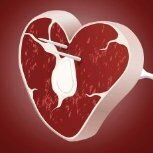
Carnivore Talk
Community ManagerPoints52Posts
Popular Content
Showing content with the highest reputation since 08/15/2023 in Articles
-
Getting Started on the Carnivore Diet - 7 Tips for Beginners
Getting Started on the Carnivore Diet - 7 Tips for Beginners
deercamp67 and 4 others reacted to Carnivore Talk for an article
5 points. This article is going to cover everything you need to know in order to get started on the Carnivore Diet and for you to personally become one of the many success stories resulting from this way of eating. So if you're thinking about starting the Carnivore Diet and not sure where to begin then keep reading and we will walk you through it. What is the carnivore diet? The Carnivore Diet is an all meat diet, also known as the meat only diet, zero carb diet, beef only diet, or Lion Diet depending on which version works best for you. You eat only animals and animal products and no plants whatsoever. That’s right. No obvious bad guys like sugar and grain, but also no vegetables, fruits, or nuts. Speaking of nuts, this probably sounds a bit nuts the first time you hear it, right? Well, if you take the time to do the research and understand the science and history behind eating this way, the more it’s going to make sense as you break it down. Why does it work? There are many reasons why the Carnivore Diet is effective for weight loss and optimizing one’s health. For starters, the Carnivore Diet is the ultimate ketogenic diet, which has been proven time and again to be one of the healthiest ways of eating in order to lose weight and reverse chronic disease. When you are eating only animal foods and no plant foods you are basically consuming zero carbs, or at least very minimal carbs, and so you experience a lot of the same benefits as you would on Keto. You will lose weight, regulate your blood sugar, and enjoy sustained energy and mental clarity. Animal-based foods are the most nutrient-dense foods on the planet. That’s right, more nutritious than any plant or plant food combination. The proteins are complete, and the vitamins are more bio-available than what you find in plants. There are also anti-nutrients found in plants that inhibit the absorption of the little nutrition within them, a problem you never encounter when eating meat. Many plants also produce self-defense chemicals to deter bugs and other animals from eating them, and so by eliminating these foods you avoid the toxins that can trigger inflammation and autoimmune symptoms. So, what can you eat? In its simplest form, only meat. But many carnivore dieters will allow for anything that comes from an animal, such as butter and cheese. You want to minimize dairy and focus on eating mostly meat and organ meats, which are loaded with vitamins and minerals. Beef is the most nutritious food for a human on the planet, but you can also enjoy eggs, seafood, chicken, and pork, including bacon. There is no need for supplementation, and you certainly will not be eating plant-based proteins or protein powders. Just focus on eating fatty cuts of meat. Lean meat is okay, but you need to consume fat for energy and to enjoy feeling satisfied for several hours at a time. Tips for getting started Tip #1: Ease into it There are several ways to get started. For starters, there WILL be an adaptation phase as your body transitions to consuming an all meat (or meat-based, meat-heavy) diet. If you have been consuming the high sugar, high carbohydrate diet recommended by the USDA’s MyPlate Guidelines (formerly the Food Pyramid), you are going to experience withdrawal symptoms. Just like an addiction to drugs, humans get addicted to sugar and carbohydrates from ultra processed food. Coming off of sugar and carbs can be very similar to coming off of an addictive drug. With this in mind, you may want to ease into this way of eating by starting with a Keto diet for at least a couple weeks. A true keto diet consists of only meat and low carb vegetables and no grain, no sugar, and no sugar substitutes. Don’t count or limit your carbs during this first 2 weeks, just focus on eating whole foods that went from farm to table without passing through a processing plant. Then for week 3, start counting your actual carbs and capping your daily carb intake at 20g or less. On week 4, cap that carb count at 10g or less. Then on week 5, remove all vegetation and focus on eating only animal products. There will be no longer any need to count carbs because the carbs you do consume will be trivial (eggs have carbs, so do scallops, etc). You will have already been in ketosis for some time and fat adapted and your adaptation phase will be short lived or maybe even non-existent. Tip #2: Give it at least 30 days We would encourage you to commit to a minimum of 30 days. Don’t expect to eat carnivore for a few days or a couple weeks and expect to see drastic results. You may notice some benefits of a carnivore diet within just a few days, but many of the major benefits take several weeks to several months to become manifest. This is why you should do at least a personal 30 day “Carnivore Challenge” and then at the end of that month extend it to 60 or 90 days. The longer you stick to the carnivore lifestyle the more results you will see when it comes to any weight or health issues you may have. Tip #3: Join the community! You will want to connect with others who are also choosing to use keto or carnivore to optimize their health and lose weight. It is wonderful to have a support group when the people around you in real life, your family or friends, aren't on board with your new lifestyle. Thanks to the plant-based propaganda that has proliferated over the last several decades, there will be those who think that what you're doing is completely crazy. This may even include your doctor who was classically trained to believe that saturated fat and meat is bad. In actuality, this is what our ancestors thrived on, and isn’t too far off from what your grandparents were eating just a couple of generations ago. CarnivoreTalk.com was created to be just that kind of community where you can find encouragement, support, and ask questions and get answers. We love to talk about Carnivore, which is why we call ourselves “CarnivoreTalk”. Whether it is in the forums or in our Zoom meetings, you can get the help you need to stay the course, as well as the medical and scientific research to back up what you are doing for the sake of your health. 4. Eat Until Full When you do sit down to enjoy your tasty carnivore meal, you want to make sure to eat until you are full and satisfied, but not in any kind of pain nor any feeling of being overstuffed. “Comfortably stuffed” is what you’re looking for. What is really nice about this lifestyle is that there is no calorie counting and no portion control on a carnivore diet. You shouldn’t have to concern yourself with counting macros. Why? Because your ancestors didn’t bother with all that recording and math. They just ate and were healthy. So, aim for 2 or 3 satisfying meals each day full of fatty meat and you will find that you don’t get hungry as much as you’re used to being on high carbohydrate diet. You are going to encounter this one problem at the beginning. As you fill up on mostly protein and fat from the meat and eggs that make up the bulk of your diet now, you’re going to not feel hungry as often. This is good in that you won’t be tempted to snack in between meals, and that’s a good thing. You don’t want to do that. But this never being hungry can be bad in that you might start unwittingly portion controlling. Don’t eat a small portion and assume that this is enough. You want to eat until you are comfortably stuffed. So, you might need to push yourself to eat a normal sized meal, or even a slightly larger one if you're only eating twice a day, or even larger if you are eating one meal a day. If the concept of only having one or two meals a day sounds strange to you, then you will be pleasantly surprised when next thing you know, why you too are only eating once or twice a day. Many carnivores who have been eating this way for a while find that they forget a meal or two. This is just fine and you can and maybe should increase the size of those meals. Of course, if you prefer to eat 3 meals that is fine too, as long as what is on your plate is appropriate. 5. Animal Fat is your friend This is the type of meat you want to go for when planning your meals. Choose fatty seafood or fatty cuts of livestock or game. You always want to consume food that has a nice balance between fat and protein. But remember you don’t have to count macros. Go ahead and add more fat if you feel like your meal could use some more, especially if you are using lean meat. Fat is what your body is going to use for fuel now. If you don’t consume enough fat yet consume a lot of protein, your body will convert that protein into glucose, the very substance you are trying to avoid by cutting out the carbs. You may have grown up in a time when butter was being vilified and vegetable oils were being praised as the healthy alternative. This mindset continues to this day, but it is actually erroneous. All of that vegetable oil and shortening is very inflammatory and bad for your health, so round it all up and throw it away. You actually should cook in butter or beef tallow or even bacon grease. Not only will this help increase your fat to protein ratio (not that we’re counting) but these animal-based fats are a great source of vitamins and minerals that you would possibly be missing out on by not including them in your diet. 6. Salt, Electrolytes, & Minerals You want to make sure that you have a good source of electrolytes and Minerals, as this is going to benefit you in a number of ways. For example, these are going to help you with as you likely experience carbohydrate withdrawal symptoms. One of these symptoms could be incredibly strong cravings for junk food. Electrolytes and minerals will help you stay in control because cravings are often a sign of some sort of mineral deficiency. Salt is an electrolyte and an essential part of a natural human diet. You’ve no doubt heard the misinformation that salt is bad for you, but it is perfectly safe to salt to taste. If you feel like you need to add more salt, you can go ahead and feel good about it. Real salt is good for you, and the two best sources of natural, unadulterated salt is Pink Himalayan Salt or Redmond’s Real Salt. These two salts come from areas that have been protected from exposure to various pollutants. Salt will help fight any carbohydrate withdrawal symptoms you might experience when you first transition to carnivore, because the sodium and chloride you get from salt are essential elements that your body needs. That’s right, you NEED salt in order to function properly. 7. Out with the old, in with the new. Remove potential temptations. Yes, it’s time to purge your pantry and your fridge of all the junk food you have on site. You know you reach for those not out of hunger, but usually out of boredom, habit, or temptation. Don’t have that mentality that you have to eat everything you’ve bought and brought home before you get started. Take this opportunity to clean out all those canned vegetables and the bags of frozen vegetables that have accumulated but you never ever touch anyway. Give it away to friends, family, or neighbors. You might even consider giving it to some charity, and you’ll feel good about it as well. Now that you have purged your home of all other options, you need to make sure you are stocked on tasty, nutritious carnivore food options. A carnivore diet food list includes fatty red meat like ribeye’s, NY strips, ribs, as well as ground beef or lamb. Stock up on butter, ghee, or tallow in place of the vegetable oils you should have tossed out. Eggs are one of the world’s most perfect foods and can be made in a variety of ways. Get some fatty fish such as salmon and try some sardines. Make some bone broth and learn to prepare some liver once in a while. Cheese is acceptable, although some people do better by minimizing their cheese consumption. You can do this! It takes some time to make your mind over and unlearn some of the things we have been taught. You also have to be patient and whether any carb withdrawals and adjustments to your daily routine. But commitment is key, which is why you should set that 30-day challenge as a personal goal. You will likely have experienced some positive results by the time day 30 comes around, plus you will no longer feel like this is a "challenge". Most people who make it to 30 days choose to extend it another 30, 60, or 90 more days, and many continue to eat a pure carnivore diet for years. So don't give up. You can do this!5 points -
The Various Types of Carnivore Diets
The Various Types of Carnivore Diets
deercamp67 and 2 others reacted to Carnivore Talk for an article
3 points. The carnivore diet is as easy as just eating meat, right? This is basically true. But if you follow some famous carnivore proponents on socail media or YouTube you may get confused. Some carnivores might be seen eating cheese or using heavy cream, and others may be caught using some herbs and spices on their food. I've spotted one drinking a diet soda, and then others boast about eating fruit and honey. So, like, what gives? What Is the Carnivore Diet? A carnivore diet is a lifestyle that consists of eating mainly animal products, such as meat, fish, and eggs. Traditionally, this diet eliminates all plant-based foods, including fruits, vegetables, grains, and legumes. The thinking behind a carnivore diet is that humans evolved to eat meat and that our bodies are better adapted to digest and absorb nutrients from animal products, and that plants contain toxic self-defense chemicals that over time can harm your health, possibly being the root cause of many auto-immune disorders and chronic diseases. Different Types of Carnivore Diets The Lion Diet (Elimination Diet) - This diet consists of unprocessed ruminant flesh, usually beef, but could also include lamb, elk, etc, with salt, and only water. This is usually a zero carb carnivore diet. Many peple eat this way because they get inflammation and other physical symptoms when they eat other food. This is also a perfect way to start an elimination diet, starting with 30-90 days of Lion Diet and then slowly reintroduce foods one at a time to see how you react to them. The Standard Carnivore Diet - This is the most dogmatic and strict form of the carnivore diet, which involves consuming only water, salt, and meat, whether ruminants, poultry, pork, or seafood, including eggs and fish roe. No dairy, no seasonings, no supplements, and no plant foods are allowed. This diet is based on the premise that humans are designed to eat only animal foods, and that plant foods are harmful or unnecessary for optimal health The Nose-to-Tail Carnivore Diet - This is a more nutrient-dense version of the carnivore diet which includes any animal flesh, as well as organ meats such as liver, kidney, heart, and brain. Organ meats are rich sources of vitamins, minerals, antioxidants, and co-factors that are essential for various bodily functions and may prevent deficiencies that may arise from eating only muscle meats. This may often mean zero carb depending on the type of seafood and the amount of eggs. This is also sometimes called ancestral carnivore or restrictive Paleo. Any Animal Products Carnivore Diet - This slightly more flexible version of the carnivore diet includes all animal flesh and any animal byproducts that can be produced by the animal kingdom. This would include dairy products such as milk, yogurt, heavy cream, cheese, butter & ghee, as well as things like bacon, sausage, pork rinds, and deli meat. This is also sometimes called Zero Carb Carnivore by those who still avoid milk sugars and certain seafoods. Animal-based "Carnivore" Diet - Primarily animal sourced products but also allows participants to partake in some carbs found in nature, including some occasional bee honey and some fruitage that can be eaten based on seasonal availability. It's basically a mix of carnivore and Paleo. Animal-based dieters are still focused on animal consumption and avoiding plants (except their fruitage) and plant toxins with little to no regard for carbohydrate consumption. Dogmatic carnivore purists will argue that this is not "true" carnivore. Carnivorish/Ketovore Diet - This Meat-based Keto lifestyle still focuses primarily on animal products but does allow for some plant-based oils like coconut oil, olive oil, and avocado oil (the good kinds) along with the inclusion of some low carb vegetables, with the aim of limiting carb consumption to 10g (ketovore) or 20g (keto) per day. This version permits the use of some spices and herbs to enhance the flavor and variety of the meals as well. Dogmatic carnivore zealots will argue that this is not "true" carnivore. Which Carnivore or "Carnivorish" Diet is Right for Me? Rather than be dogmatic, all of the above can fall under the umbrella of what Dr. Ken Berry M.D. refers to as "The Proper Human Diet". A proper human diet is one that is all natural, uninflammatory, minimally processed, and low in carbohydrates (meaning about 100g or less per day). The key to optimizing your health is to find out where on the spectrum you fit in the best. For some this may mean being absolutely strict about being a pure carnivore and avoiding plants and fruitage altogether. For others this may mean low carb, non-starchy vegetables that have a minimal impact on insulin and glucose levels are fine. Still others may choose to eat fermented or pickled vegetables and some may enjoy some fruit, but only seasonally or sporadically. The amount and frequency with which one consumes fruit and vegetables on the carnivore or animal-based diet may vary depending on the individual’s goals, preferences, and tolerance. The key is to listen to your body and adjust accordingly. If you notice any negative effects from eating vegetables, such as bloating, gas, diarrhea, or cravings, you may want to reduce or eliminate them from your diet. So where on the spectrum are you? What kind of carnivore dieter do you tend to be?3 points -
A Brief Overview of a the Various Low Carb Diets
A Brief Overview of a the Various Low Carb Diets
Angela Little reacted to Carnivore Talk for an article
1 pointA low-carb diet is a dietary approach that emphasizes the reduction of carbohydrate intake, particularly from sources such as grains, starchy vegetables, fruits, and sugary foods. The main idea behind a low-carb diet is to reduce the intake of carbohydrates, which are broken down into glucose (sugar) in the body and can lead to fluctuations in blood sugar levels and insulin production. By limiting carbohydrate intake, the body is encouraged to use other sources of energy for fuel, primarily fat, including your own stored fat. The specific level of carbohydrate restriction can vary, but generally, a low-carb diet involves significantly reducing the intake of foods like bread, pasta, rice, cereal, and sugary snacks. Instead, individuals following a low-carb diet often focus on consuming foods high in protein, healthy fats, and non-starchy vegetables. Examples of foods allowed on a low-carb diet include: Meats and poultry: Chicken, turkey, beef, pork, etc. Fish and seafood: Salmon, trout, shrimp, etc. Eggs: A good source of protein and healthy fats. Nuts and seeds: Almonds, walnuts, chia seeds, flaxseeds, etc. Healthy fats: Avocado, olive oil, coconut oil, butter. Non-starchy vegetables: Spinach, broccoli, cauliflower, zucchini, peppers, etc. It's important to note that there are variations of low-carb diets. Some common variations of low-carb diets include: Atkins Diet: Developed by Dr. Robert Atkins, this diet restricts carbohydrate intake, but it has different phases that gradually increase carb intake as you progress through the plan. The initial phase is extremely low in carbs to induce weight loss and ketosis, while later phases reintroduce more carbs while still emphasizing protein and healthy fats. Low Carb Diet: A general low carb diet aims to keep the total of carbohydrates consumed each day under 100g per day. This closely mirrors the 4th and final phase of the Atkins approach, called the Maintenance plan. Some people on a low carb diet will eat anything as long as they stay under their carbohydrate goals, including processed foods. Ketogenic Diet (Keto): This is one of the most well-known low-carb diets. It involves drastically reducing carbohydrate intake to a point where the body enters a state of ketosis, usually under 20 actual carbs per day. In ketosis, the body switches from using glucose as its primary energy source to using ketones, which are produced from fat breakdown. Keto dieters aim to eat only fresh, whole, single-ingredient foods that have gone from farm to table, bypassing a manufacturer who may have processed it, with a few exceptions. This means no sugar and no grain in general. Dirty Keto: This is a hybrid between True Keto and general low carb diets. Those on a "Dirty Keto" diet are usually willing to keep their carbohydrate intake very low, but aren't willing to give up processed food and grains. They bend the rules a bit by counting what is often referred to as "net carbs" instead of actual carbs. Some manufacturers, in order to sell their products, will claim that since certain ingredients they use are low on the glycemic index, or aren't technically sugar, that they shouldn't count the same as regular carbs. While this isn't true, many people still find success by only eating things that are low on the glycemic index. Carnivore Diet: A dietary approach that consists almost entirely of animal products, to the exclusion of most plant-based foods due to their natural defense chemicals and toxins. It's often thought of as the ultimate ketogenic diet, getting as close to zero carb as possible. Those following a carnivore diet typically consume various types of meat, such as beef, poultry, pork, and fish, but will usually place emphasis on ruminant animals. The diet completely excludes carbohydrates from sources like grains, fruits, vegetables, and legumes. Ketovore Diet: This dietary approach is a hybrid between a true Keto and carnivore diet. This lifestyle places emphasis on consuming mostly animal-based foods, but isn't opposed to occasional fresh low carb vegetables. The ketovore dieter will usually try to stay under 10 grams of carbs per day during their weight loss journey, but once they have reached their goals some may incorporate fruit into their diet, thus becoming a Paleolithic dieter. Paleolithic (Paleo) Diet: While not solely a low-carb diet, the Paleo diet emphasizes whole foods and eliminates processed foods, grains, and legumes. This naturally results in a reduced carb intake and places greater emphasis on protein, vegetables, fruits, and healthy fats. People choose to follow low-carb diets for various reasons, including weight loss, blood sugar control, and to manage or reverse such medical conditions like diabetes, metabolic syndrome, and high blood pressure.1 point -
What is Carnivore Talk - The Animal-based Keto Community?
What is Carnivore Talk - The Animal-based Keto Community?
Kat7 reacted to Carnivore Talk for an article
1 pointCarnivoreTalk is an online keto diet forum community that aims to serve individuals who are following or interested in any of the four main low carbohydrate diets, namely Low Carb (also known as Dirty Keto), Keto, Ketovore, and Carnivore. It is our mission to provide a safe and enjoyable environment where health-conscious individuals can enjoy the following benefits. Support and Encouragement: Following a specific diet can be challenging, and having a community of like-minded individuals can provide valuable emotional support, encouragement, and motivation. Members can share their experiences, successes, challenges, and tips for overcoming obstacles. Information Sharing: Diet forums serve as platforms for sharing information, research, and resources related to their specific diet, whether that's a Carnivore, Ketovore, True Keto, or Low Carb diet. Members can discuss the science behind their low carbohydrate or animal-based diet, its potential benefits, and the practical aspects of following it effectively. Recipe and Meal Ideas: Members can exchange recipes, meal plans, and cooking tips that are tailored to the particular animal-based, low carb, or ketogenic diet. This helps individuals diversify their meals, maintain variety, and discover new ways to prepare nutritious keto-friendly foods. Problem Solving: Many people encounter unique challenges when starting or maintaining a diet. Forum communities allow members to seek advice and solutions from others who have faced similar issues, such as dealing with keto flu, managing cravings, or navigating social situations. Accountability: Sharing progress and goals within a supportive community can enhance accountability. Members can set goals, track their journey, and receive feedback from others, which can help them stay committed to their dietary choices. Education: Forums often have experienced members who are knowledgeable about the a Carnivore, Keto, or Low Carb diet. Newcomers can ask questions, seek clarifications, and learn from those who have been following the diet for a longer time. Personal Experiences: Reading about the experiences of others can help individuals gauge what to expect when starting their diet, which can be particularly reassuring for beginners. Networking: Diet forums offer the opportunity to connect with people from diverse backgrounds who share a common interest in the diet. This can foster new friendships, connections, and even local meetups or events. Keto and Carnivore dieters tend to develop close bonds with one another. Research and Debate: Members can engage in discussions about the latest research, trends, controversies, and potential modifications of their diet. This encourages critical thinking and informed decision-making. Community Building: Over time, online forums can foster a sense of belonging within a community. Members may establish connections that extend beyond dietary discussions, creating a supportive environment where individuals can share various aspects of their lives. Making Friends: Many of us have been involved in other forums over the years, and made life long friends and have even met in real life. It's important to note that while online diet forums can be valuable resources, the information shared does not constitute medical advice. Even if a member is a doctor, nutritionist, or health coach, you should always consult with YOUR healthcare professionals or registered dietitians before making significant changes to your diet, especially if you have underlying health conditions.1 point
